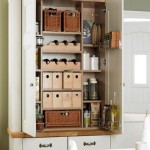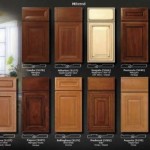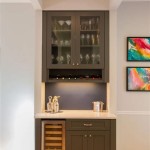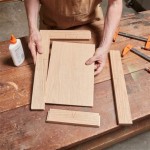Cabinet Hardware Rules and Regulations: A Guide to Proper Placement
Cabinet hardware, like the jewelry of a kitchen or bathroom, plays a crucial role in enhancing the functionality, aesthetics, and overall user experience of your space. Whether you're embarking on a new construction project or refreshing an existing one, understanding the rules and regulations surrounding cabinet hardware is essential to ensure a harmonious and practical design.
General Placement Guidelines
Vertical Spacing: The vertical spacing between cabinet hardware is typically determined by the height of the cabinet door or drawer. Generally, a good rule of thumb is to place the hardware at the center of the vertical space, ensuring an even distribution of weight.
Horizontal Spacing: For horizontal spacing, consider the width of the cabinet door or drawer. The hardware should be placed evenly on both sides, maintaining a balanced and symmetrical appearance.
Knobs and Pulls: Size and Placement
Knobs: Knobs, typically used for smaller cabinets and drawers, are versatile and easy to use. They should be sized appropriately to the cabinet or drawer, with a diameter of around 1.25 to 1.5 inches for easy gripping.
Pulls: Pulls, ideal for larger cabinets and drawers, offer a more comfortable grip. For a standard-sized cabinet or drawer, a pull length of 3 to 4 inches is a good starting point. Adjust the length as needed based on the cabinet size for optimal functionality.
Clearance and Accessibility
Clearance: Adequate clearance around the hardware is crucial for easy accessibility. The hardware should be positioned far enough away from the edges of the cabinet so that fingers can comfortably reach and operate it.
Accessibility: Consider the location of the hardware in relation to other elements in the space, such as adjacent cabinets or appliances. Ensure there is sufficient room for the hardware to be used without interference.
Type and Material Selection
Style: The type and material of the hardware should complement the overall design aesthetics of the space. From classic knobs to modern pulls, there's a wide range of options to suit different tastes and styles.
Durability: Choose hardware made of durable materials that can withstand daily use and wear and tear. Common options include metal, plastic, and wood, each offering its unique advantages and characteristics.
Safety Considerations
Sharp Edges: Avoid hardware with sharp edges that may pose a safety hazard. Opt for smooth, rounded edges or designs that prioritize safety.
Antibacterial Properties: In areas where hygiene is important, such as kitchens or bathrooms, consider choosing hardware with antibacterial properties to prevent the spread of germs.
Conclusion
Understanding the rules and regulations surrounding cabinet hardware is essential for creating a functional and aesthetically pleasing space. By following these guidelines, you can ensure that your cabinet hardware complements the overall design, provides ease of use, and meets any specific requirements of the space.

Ada Friendly Cabinet Hardware The Knob

Cabinet Door Hardware Placement Guidelines Taylorcraft Company

Hardware Guide

Our Go To Cabinet Hardware Placement 60 Of Pable Favorites Emily Henderson

Cabinet Door Hardware Placement Guidelines Taylorcraft Company

Comprehensive Guide To Cabinet Hardware Size Placement Handles More Ltd

Design 101 Cabinet Hardware Placement Lark Linen

Cabinet Hardware Placement Guide Foxy Oxie

The Ultimate Guide For Cabinet Hardware Placement And Sizing San Diego

Drilling Your Own Cabinet Hardware Knobs And Pulls
Related Posts








